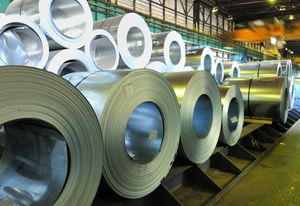CP reviewing details of 212-page decision authorizing control of KCS on or after April 14
Canadian Pacific (TSX: CP) (NYSE: CP) (“CP”) and Kansas City Southern (“KCS”) said today the U.S. Surface Transportation Board (“STB”) issued a decision approving the CP and KCS joint merger application, subject to certain conditions, thereby authorizing the two railways to combine to form Canadian Pacific Kansas City (“CPKC”), the first single-line railway connecting the U.S., Mexico and Canada.
The decision authorizes CP to exercise control of KCS as early as April 14, 2023, at or after which point CP and KCS would combine to create the new CPKC. CP is reviewing the full 212-page decision in detail and in the coming days will announce its plans with respect to the creation of CPKC.
CP President and Chief Executive Officer Keith Creel extended the company’s sincere gratitude to the STB board and staff for their hard work as part of the comprehensive review of the combination.
“This decision clearly recognizes the many benefits of this historic combination,” Creel said. “As the STB found, it will stimulate new competition, create jobs, lead to new investment in our rail network, and drive economic growth.
“These benefits are unparalleled for our employees, rail customers, communities and the North American economy at a time when the supply chains of these three great nations have never needed it more,” Creel added. “A combined CPKC will connect North America through a unique rail network able to enhance competition, provide improved reliable rail service, take trucks off public roads and improve rail safety by expanding CP’s industry-leading safety practices.”
"This important milestone is the catalyst for realizing the benefits of a North American railroad for all of our stakeholders," said Patrick J. Ottensmeyer, KCS President and Chief Executive Officer. "The KCS Board of Directors and management team are very proud of the many contributions and achievements of the people who have made KCS what it is today and we are excited for the boundless possibilities as we move forward into the next chapter as CPKC."
CPKC will bring a new standard of safety to the North American rail landscape. CP has been the safest railroad in North America for 17 straight years as measured by the Federal Railroad Administration train accident frequency ratio. In 2022, CP had an all-time best frequency of 0.93, a rate nearly half what the company produced a decade ago and 69 percent lower than the Class 1 average.
CP’s culture of safety, supported by its history of sustained investments in core infrastructure and technology, aligns with KCS’s likeminded culture, allowing the combined system to operate at the apex of rail safety. CPKC will implement the combination with safety at the forefront of everything it does.
Among the core conclusions reached by the STB regarding the public and pro-competitive benefits of the CP-KCS combination, including that the combination “should ultimately enhance safety and benefit the environment”:
“The Board expects that this new single-line service will foster the growth of rail traffic, shifting approximately 64,000 truckloads annually from North America’s roads to rail, and will support investment in infrastructure, service quality, and safety,” the board said in its decision, going on to say, ”Indeed, approval of this transaction may even enhance safety for the nation as a whole” and that “thus, any rail traffic diverted to CPKC from other railroads will likely mean traffic moving to a railroad with a better safety record.”
“The transaction is also expected to drive employment growth across the CPKC system, adding over 800 new union-represented operating positions in the United States,” the board continued. “Of additional importance, the merger will foster new National Railroad Passenger Corporation (Amtrak) passenger rail opportunities, as Applicants have committed to support Amtrak’s existing plans for expanded service on the new railroad’s lines.”
“This transaction is “end-to-end,” meaning that there are little to no track redundancies or overlapping routes. If consummated, it will reduce travel time for traffic moving over the single line service; it should result in increased incentives for investment; and it will eliminate the need for the two now-separate CP and KCS systems to interchange traffic moving from one system to the other. This will enhance efficiency, which in turn will enable the new CPKC system to better compete for traffic with the other larger Class I carriers,” the decision says.
The board concluded, “The Transaction will make possible improved single-line service for many shippers and will result in merger synergies that are likely to allow CPKC to be a vigorous competitor to other Class Is by providing improved service at lower cost.”
CP completed its US$31 billion acquisition of KCS on Dec. 14, 2021. Immediately upon the closing of that acquisition, shares of KCS were placed into a voting trust with Dave Starling, former KCS President and CEO, appointed as the trustee. Upon Mr. Starling’s death, Ronald L. Batory was appointed as successor trustee with the STB’s approval. The Voting Trust has ensured that KCS operates independently of CP during the regulatory review process, and until CP exercises control pursuant to the STB decision, CP and KCS will continue to operate independently.
Headquartered in Calgary, Alta., Canada, CPKC would be the first railway connecting North America. While remaining the smallest of six U.S. Class 1 railroads by revenue, the combined company will have a much larger and more competitive network, operating approximately 20,000 miles of rail, employing close to 20,000 people. Once combined, full integration of CP and KCS is expected to happen over the next three years, unlocking the benefits of the combination.
Forward looking information
This news release contains certain forward looking statements and forward looking information (collectively, “FLI”) to provide CP shareholders and potential investors with information about CP, KCS and their respective subsidiaries and affiliates, which FLI may not be appropriate for other purposes. FLI is typically identified by words such as “anticipate”, “expect”, “project”, “estimate”, “forecast”, “plan”, “intend”, “will”, “target”, “believe”, “likely” and similar words suggesting future outcomes or statements regarding an outlook. All statements other than statements of historical fact may be FLI.
Although we believe that FLI is reasonable based on the information available today and processes used to prepare it, such statements are not guarantees of future performance and you are cautioned against placing undue reliance on FLI. By its nature, FLI involves a variety of assumptions, which are based upon factors that may be difficult to predict and that may involve known and unknown risks and uncertainties and other factors which may cause actual results, levels of activity and achievements to differ materially from those expressed or implied by FLI, including, but not limited to, the following: the realization of anticipated benefits and synergies of the CP-KCS transaction and the timing thereof; the success of integration plans; the focus of management time and attention on the CP-KCS transaction and other disruptions arising from the CP-KCS transaction; changes in business strategy and strategic opportunities; estimated future dividends; financial strength and flexibility; debt and equity market conditions, including the ability to access capital markets on favourable terms or at all; cost of debt and equity capital; the ability of management of CP, its subsidiaries and affiliates to execute key priorities, including those in connection with the CP-KCS transaction; general Canadian, U.S., Mexican and global social, economic, political, credit and business conditions; risks associated with agricultural production such as weather conditions and insect populations; the availability and price of energy commodities; the effects of competition and pricing pressures, including competition from other rail carriers, trucking companies and maritime shippers in Canada, the U.S. and Mexico; North American and global economic growth; industry capacity; shifts in market demand; changes in commodity prices and commodity demand; uncertainty surrounding timing and volumes of commodities being shipped; inflation; geopolitical instability; changes in laws, regulations and government policies, including regulation of rates; changes in taxes and tax rates; potential increases in maintenance and operating costs; changes in fuel prices; disruption in fuel supplies; uncertainties of investigations, proceedings or other types of claims and litigation; compliance with environmental regulations; labour disputes; changes in labour costs and labour difficulties; risks and liabilities arising from derailments; transportation of dangerous goods; timing of completion of capital and maintenance projects; sufficiency of budgeted capital expenditures in carrying out business plans; services and infrastructure; the satisfaction by third parties of their obligations; currency and interest rate fluctuations; exchange rates; effects of changes in market conditions and discount rates on the financial position of pension plans and investments; trade restrictions or other changes to international trade arrangements; the effects of current and future multinational trade agreements on the level of trade among Canada, the U.S. and Mexico; climate change and the market and regulatory responses to climate change; ability to achieve commitments and aspirations relating to reducing greenhouse gas emissions and other climate-related objectives; anticipated in-service dates; success of hedging activities; operational performance and reliability; customer and other stakeholder approvals and support; regulatory and legislative decisions and actions; the adverse impact of any termination or revocation by the Mexican government of Kansas City Southern de Mexico, S.A. de C.V.’s Concession; public opinion; various events that could disrupt operations, including severe weather events, such as droughts, floods, avalanches and earthquakes, and cybersecurity attacks, as well as security threats and governmental response to them, and technological changes; acts of terrorism, war or other acts of violence or crime or risk of such activities; insurance coverage limitations; material adverse changes in economic and industry conditions, including the availability of short and long-term financing; and the pandemic created by the outbreak of COVID-19 and its variants, and resulting effects on economic conditions, the demand environment for logistics requirements and energy prices, restrictions imposed by public health authorities or governments, fiscal and monetary policy responses by governments and financial institutions, and disruptions to global supply chains.
We caution that the foregoing list of factors is not exhaustive and is made as of the date hereof. Additional information about these and other assumptions, risks and uncertainties can be found in reports and filings by CP with Canadian and U.S. securities regulators, including any prospectus, material change report, management information circular or registration statement that have been or will be filed in connection with the transaction. Reference should be made to “Risk Factors” and “Management’s Discussion and Analysis of Financial Condition and Results of Operations – Forward Looking Statements” in CP’s annual and interim reports on Form 10-K and 10-Q. Due to the interdependencies and correlation of these factors, as well as other factors, the impact of any one assumption, risk or uncertainty on FLI cannot be determined with certainty.
Except to the extent required by law, we assume no obligation to publicly update or revise any FLI, whether as a result of new information, future events or otherwise. All FLI in this news release is expressly qualified in its entirety by these cautionary statements.
About Canadian Pacific
Canadian Pacific (TSX: CP) (NYSE: CP) is a transcontinental railway in Canada and the United States with direct links to major ports on the west and east coasts. CP provides North American customers a competitive rail service with access to key markets in every corner of the globe. CP is growing with its customers, offering a suite of freight transportation services, logistics solutions and supply chain expertise. Visit www.cpr.ca to see the rail advantages of CP. CP-IR
View source version on businesswire.com: https://www.businesswire.com/news/home/20230315005673/en/
Contacts
Media
Alert_mediarelations@cpr.ca
Investment Community
Maeghan Albiston
403-319-3591
investor@cpr.ca






